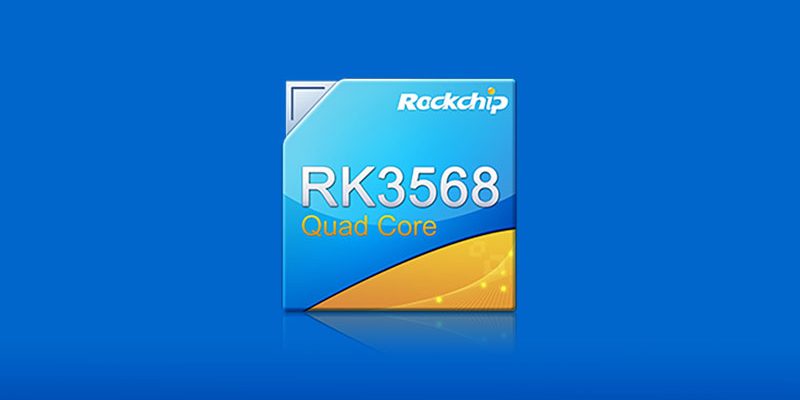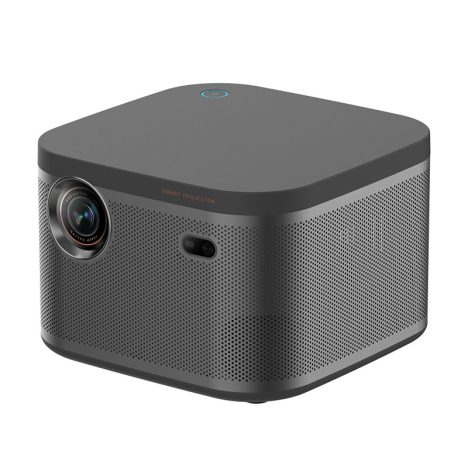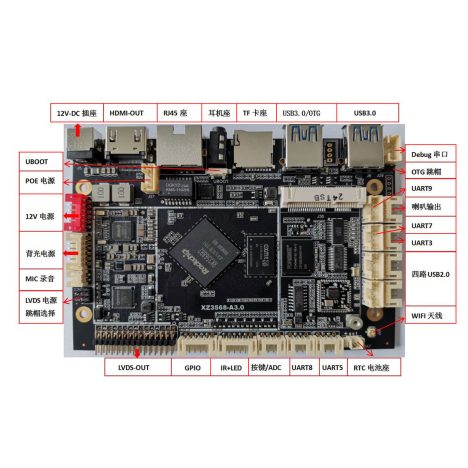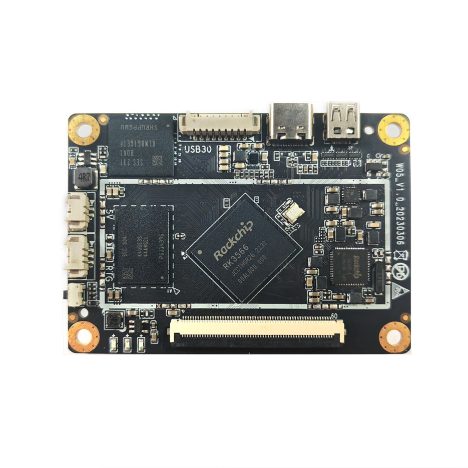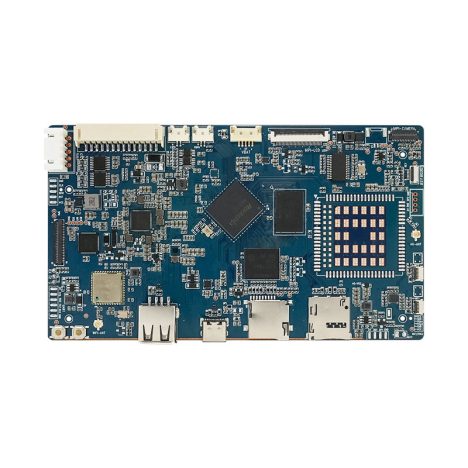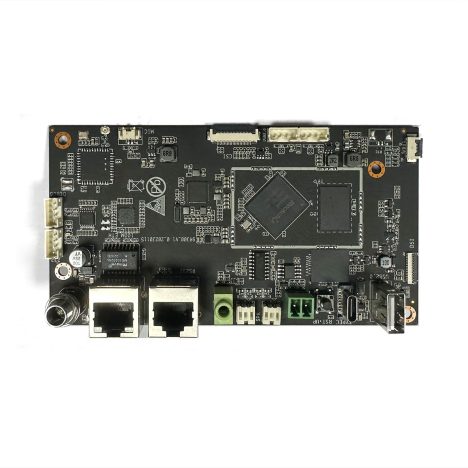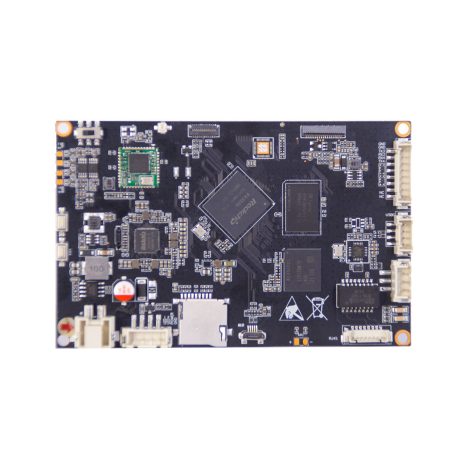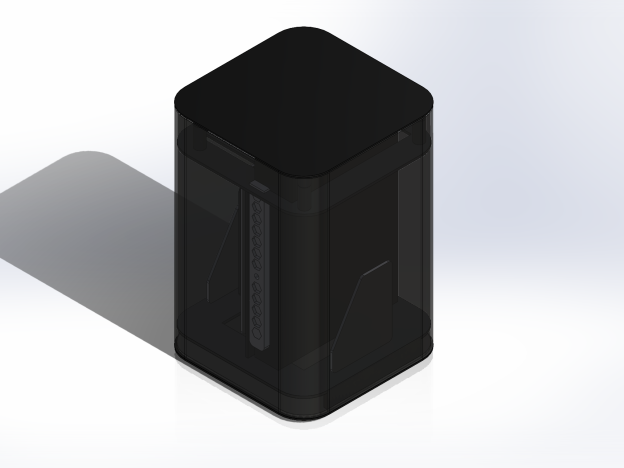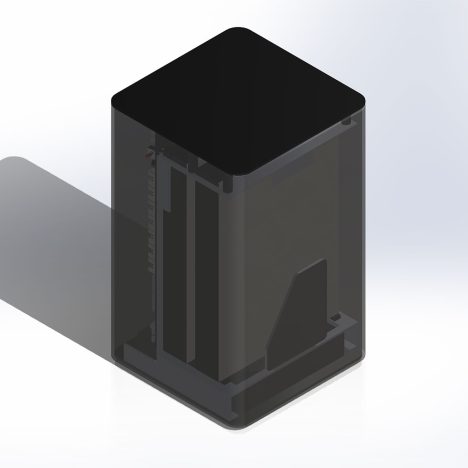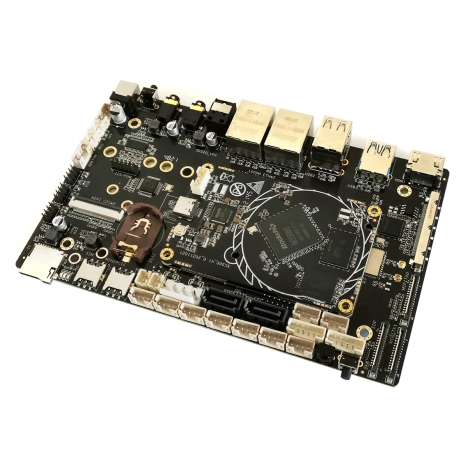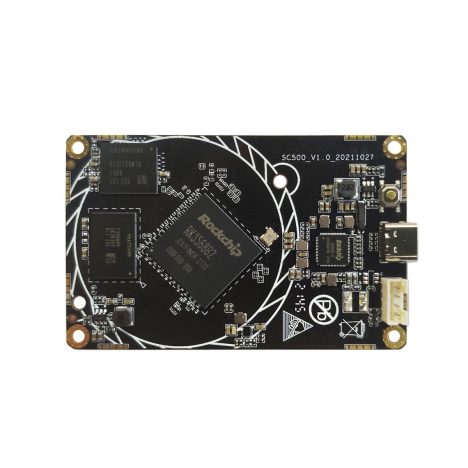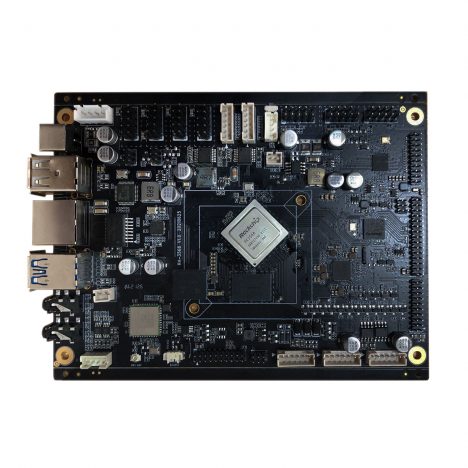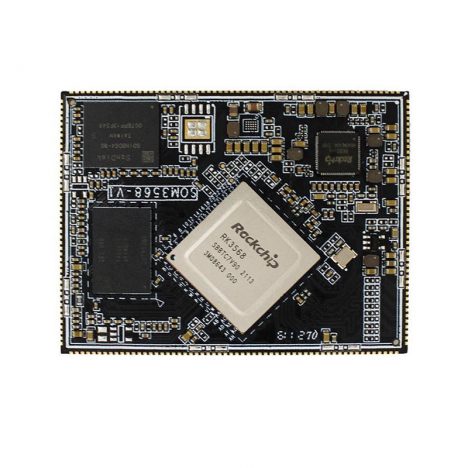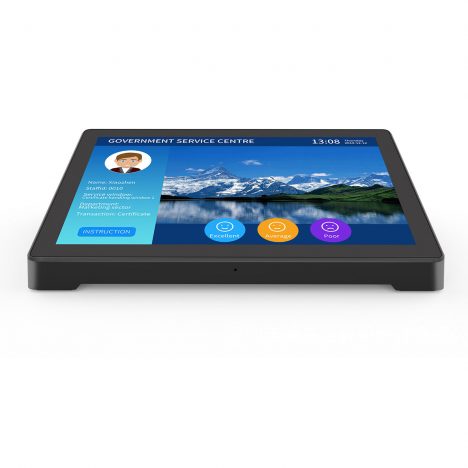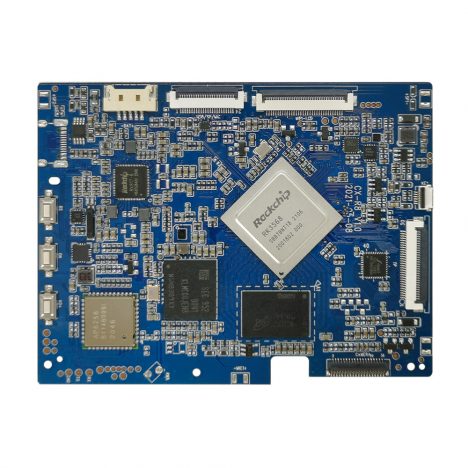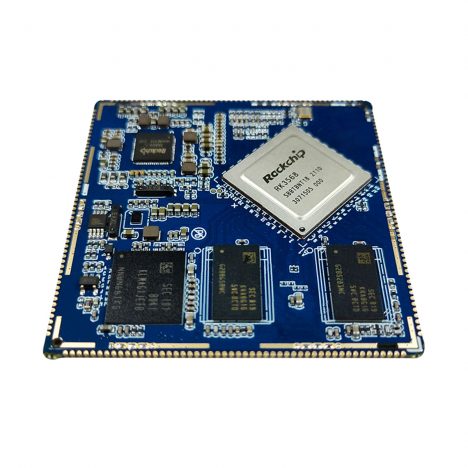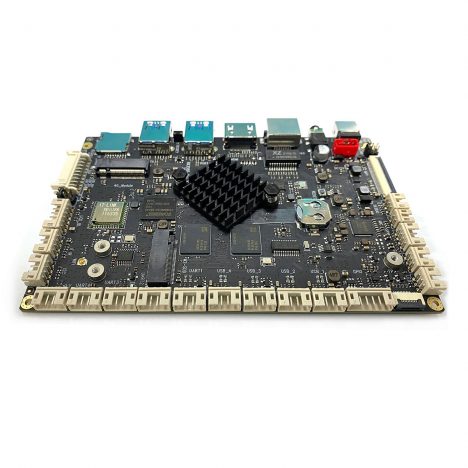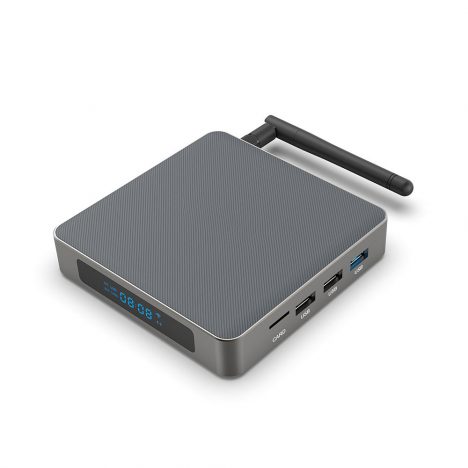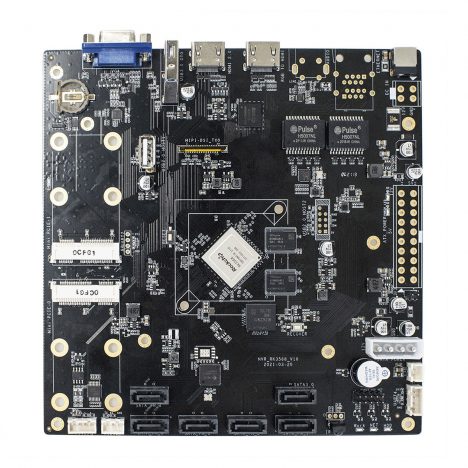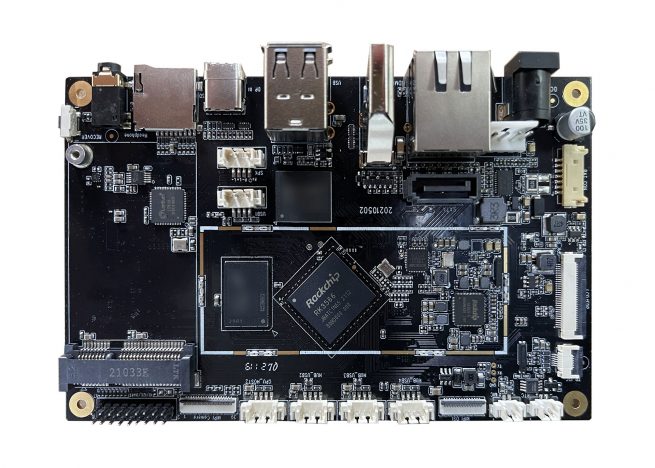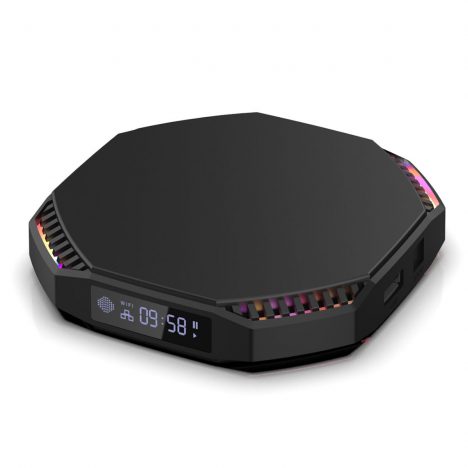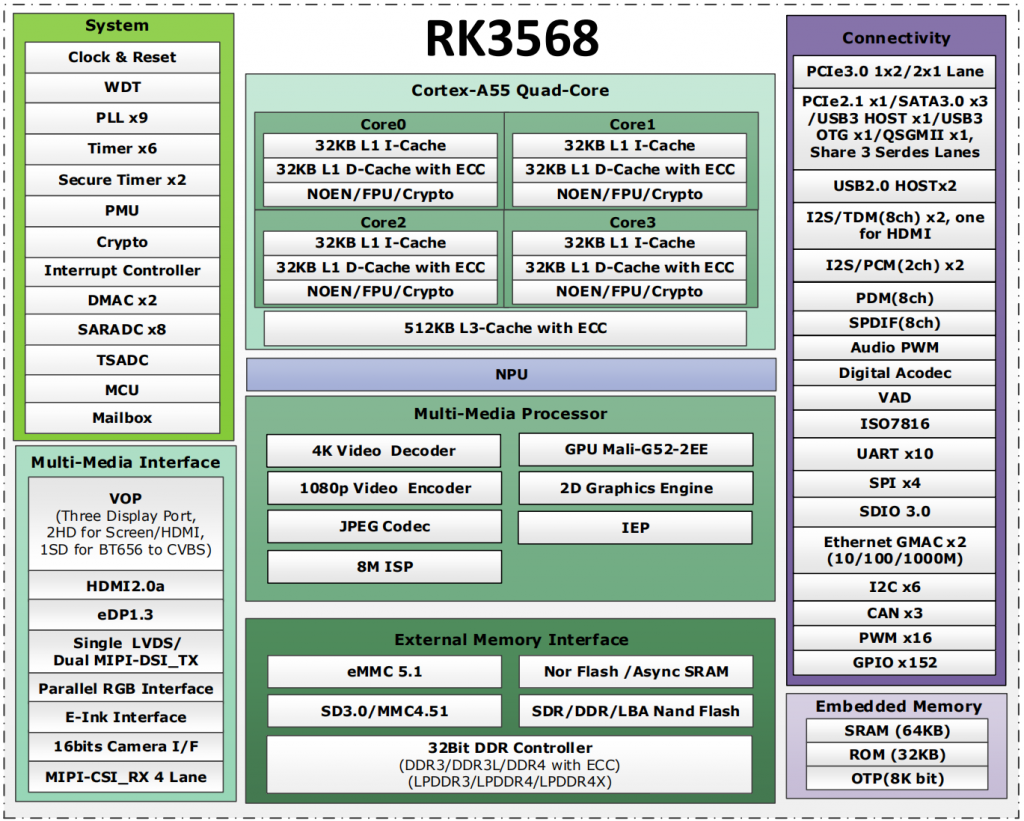 1.1 Overview
1.1 Overview
RK3568 is a high-performance and low power quad-core application processor designed for personal mobile internet device and AIoT equipments.
Many embedded powerful hardware engines are provided to optimize performance for high-end application. RK3568 supports almost full-format H.264 decoder by 4K@60fps, H.265 decoder by 4K@60fps, also support H.264/H.265 encoder by 1080p@60fps, high-quality JPEG encoder/decoder.
Embedded 3D GPU makes RK3568 completely compatible with OpenGL ES 1.1/2.0/3.2, OpenCL 2.0 and Vulkan 1.1. Special 2D hardware engine will maximize display performance and provide very smoothly operation.
The build-in NPU supports INT8/INT16/FP16/BFP16 hybrid operation. In addition, with its strong compatibility, network models based on a series of frameworks such as TensorFlow/MXNet/PyTorch/Caffe can be easily converted.
RK3568 has high-performance external memory interface(DDR3/DDR3L/DDR4 /LPDDR3/LPDDR4/LPDDR4X) capable of sustaining demanding memory bandwidths.
1.2 Features
The features listed below which may or may not be present in actual product, may be subject to the third party licensing requirements. Please contact Rockchip for actual product feature configurations and licensing requirements.
1.2.1 Microprocessor
Quad-core ARM Cortex-A55 CPU
ARM Neon Advanced SIMD (single instruction, multiple data) support for accelerated media and signal processing computation
Include VFP hardware to support single and double-precision operations
ARMv8 Cryptography Extensions
Integrated 32KB L1 instruction cache, 32KB L1 data cache with ECC
512KB unified system L3 cache with ECC
TrustZone technology support
Separate power domains for CPU core system to support internal power switch and externally turn on/off based on different application scenario
PD_A55_0: 1st Cortex-A55 + Neon + FPU + L1 I/D Cache
PD_A55_1: 2nd Cortex-A55 + Neon + FPU + L1 I/D Cache
PD_A55_2: 3rd Cortex-A55 + Neon + FPU + L1 I/D Cache
PD_A55_3: 4th Cortex-A55 + Neon + FPU + L1 I/D Cache
One isolated voltage domain
1.2.2 Neural Process Unit
Neural network acceleration engine with processing performance up to 0.8 TOPS
Support integer 8, integer 16 convolution operation
Support deep-learning frameworks: TensorFlow, TF-lite, Pytorch, Caffe, ONNX, MXNet, Keras, Darknet
One isolated voltage domain
1.2.3 Memory Organization
Internal on-chip memory
BootROM
SYSTEM_SRAM in the voltage domain of VD_LOGIC
PMU_SRAM in the voltage domain of VD_PMU for low power application
External off-chip memory
DDR3/DDR3L/DDR4/LPDDR3/LPDDR4/LPDDR4X①
SPI Nor/Nand Flash
eMMC
SD_Card
8bits Async Nand Flash
8bits toggle Nand Flash
8bits ONFI Nand Flash
1.2.4 Internal Memory
Internal BootRom
Support system boot from the following device:
SPI Flash interface
Nand Flash
eMMC interface
SDMMC interface
Support system code download by the following interface:
USB OTG interface (Device mode)
SYSTEM_SRAM
Size: 64KB
PMU_SRAM
Size: 8KB
1.2.5 External Memory or Storage device
Dynamic Memory Interface (DDR3/DDR3L/DDR4/LPDDR2/LPDDR3/LPDDR4/LPDDR4X)
Compatible with JEDEC standards
Compatible with DDR3-2133/DDR3L-2133/LPDDR3-2133/DDR4-3200/LPDDR4-3200/LPDDR4X-3200
Support 32bits data width, 2 ranks (chip selects), total addressing space is 8GB(max) for DDR3/DDR3L/DDR4
Support 32bits data width, 4 ranks (chip selects), total addressing space is 8GB(max) for LPDDR3/LPDDR4/LPDDR4X
Low power modes, such as power-down and self-refresh for SDRAM
Compensation for board delays and variable latencies through programmable pipelines
Support 8bits ECC for DDR3/DDR3L/DDR4
Programmable output and ODT impedance with dynamic PVT compensation
eMMC Interface
Compatible with standard iNAND interface
Compatible with eMMC specification 4.41, 4.51, 5.0 and 5.1
Support three data bus width: 1bit, 4bits or 8bits
Support HS200;
Support CMD Queue
SD/MMC Interface
Compatible with SD3.0, MMC ver4.51
Data bus width is 4bits
Nand Flash Interface
Support async nand flash, each channel 8bits, up to 4 banks
Support ONFI Synchronous Flash Interface, each channel 8bits, up to 4 banks
Support Toggle Flash Interface, each channel 8bits, up to 4 banks
Support sync DDR nand flash, each channel 8bits, up to 4 banks
Support LBA nand flash in async or sync mode
Up to 70bits/1KB hardware ECC
For DDR nand flash, support DLL bypass and 1/4 or 1/8 clock adjust, maximum clock rate is 75MHz
For async nand flash, support configurable interface timing , maximum data rate is 16bits/cycle
SPI Flash Interface
Support Serial NOR Flash, NAND Flash, pSRAM and SRAM
Support SDR mode
Support 1bit/2bit/4bit data width
1.2.6 System Component
CRU (clock & reset unit)
Support clock gating control for individual components
One oscillator with 24MHz clock input
Support global soft-reset control for whole chip, also individual soft-reset for each component
MCU
32bits microcontroller core
Harvard architecture separate Instruction and Data memories
Integrated Programmable Interrupt Controller (IPIC)
Integrated Debug Controller with JTAG interface
PMU(power management unit)
5 separate voltage domains(VD_CORE/VD_LOGIC/VD_NPU/VD_GPU/VD_PMU)
15 separate power domains, which can be power up/down by software based on different application scenes
Multiple configurable work modes to save power by different frequency or automatic clock gating control or power domain on/off control
Timer
Six 64bits timers with interrupt-based operation for non-secure application
Two 64bits timers with interrupt-based operation for secure application
Support two operation modes: free-running and user-defined count
Support timer work state checkable
Watchdog
32bits watchdog counter
Counter counts down from a preset value to 0 to indicate the occurrence of a timeout
WDT can perform two types of operations when timeout occurs:
Generate a system reset
First generate an interrupt and if this is not cleared by the service routine by the time a second timeout occurs then generate a system reset
Programmable reset pulse length
Totally 16 defined-ranges of main timeout period
One Watchdog for non-secure application
One Watchdog for secure application
Interrupt Controller
Support 3 PPI interrupt sources and 256 SPI interrupt sources input from different components
Support 16 software-triggered interrupts
Two interrupt outputs (nFIQ and nIRQ) separately for each Cortex-A55, both are low-level sensitive
Support different interrupt priority for each interrupt source, and they are always software-programmable
Mailbox
One Mailbox in SoC to service Cortex-A55 and MCU communication
Support four mailbox elements per mailbox, each element includes one data word, one command word register and one flag bit that can represent one interrupt
Provide 32 lock registers for software to use to indicate whether mailbox is occupied
DMAC
Two identical DMAC blocks supported(DMAC0/DMAC1)
Micro-code programming based DMA
The specific instruction set provides flexibility for programming DMA transfers
Linked list DMA function is supported to complete scatter-gather transfer
Support internal instruction cache
Embedded DMA manager thread
Support data transfer types with memory-to-memory, memory-to-peripheral, peripheral-to-memory
Signals the occurrence of various DMA events using the interrupt output signals
Mapping relationship between each channel and different interrupt outputs is software-programmable
One embedded DMA controller for system
DMAC features:
8 channels totally
32 hardware request from peripherals
2 interrupt outputs
Trust Execution Environment system
Support TrustZone technology for the following components
Cortex-A55, support security and non-security mode, switch by software
System general DMAC, support some dedicated channels work only in security mode
Secure OTP, only can be accessed by Cortex-A55 in secure mode and secure key reader block
SYSTEM_SRAM, part of space is addressed only in security mode, detailed size is software-programmable together with TZMA (TrustZone memory adapter)
Cipher engine
Support SHA-1, SHA-256/224, SHA-512/384, MD5 with hardware padding
Support HMAC of SHA-1, SHA-256, SHA-512, MD5 with hardware padding
Support AES-128, AES-192, AES-256 encrypt & decrypt cipher
Support DES & TDES cipher
Support AES ECB/CBC/OFB/CFB/CTR/CTS/XTS/CCM/GCM/CBC-MAC/CMAC mode
Support DES/TDES ECB/CBC/OFB/CFB mode
Support up to 4096 bits PKA mathematical operations for RSA/ECC
Support data scrambling for DDR SDRAM device
Support up to 256 bits TRNG Output
Support secure OTP
Support secure boot
Support secure debug
Support secure OS
1.2.7 Video CODEC
Video Decoder
H.265 HEVC/MVC Main10 Profile yuv420@L5.1 up to 4096×2304@60fps
RK3568 Datasheet Rev 1.1
H.264 AVC/MVC Main10 Profile yuv400/yuv420/yuv422/@L5.1 up to 4096×2304@60fps
VP9 Profile0/2 yuv420@L5.1 up to 4096×2304@60fps
VP8 verision2,up to 1920×1088@60fps
VC1 Simple Profile@low, medium, high levels, Main Profile@low, medium, high levels, Advanced Profile@level0~3,up to 1920×1088@60fps
MPEG-4 Simple Profile@L0~6,Advanced Simple Profile@L0~5,up to 1920×1088@60fps
MPEG-2 Main Profile, low, medium and high levels, up to 1920×1088@60fps
MPEG-1 Main Profile, low, medium and high levels, up to 1920×1088@60fps
H.263 Profile0,levels 10-70,up to 720×576@60fps
Video Encoder
H.264/AVC BP/MP/HP@level4.2,up to 1920×1080@100fps
H.265/HEVC MP@level4.1, up to 1920×1080@100fps (4096×4096@10fps with TILE)
Support YUV/RGB video source with rotation and mirror
1.2.8 JPEG CODEC
JPEG decoder
JPEG Baseline interleaved, max resolution up to 8176×8176, performance up to 76 million pixels per second
JPEG encoder
Baseline Non-progressive
up to 8192×8192
up to 90 million pixels per second
1.2.9 Image Enhancement (IEP module)
Image format support
Input data: YUV420/YUV422 ; semi-planar/planar; UV swap
Output data: YUV420/YUV422 ; semi-planar; UV swap; Tile mode
YUV down sampling conversion from 422 to 420
Max resolution for dynamic image up to 1920×1080
De-interlace
I5O2: Input 5 Fields Output 2 frames mode
I5O1T: Input 5 Fields Output 1 Top frame mode
I5O1B: Input 5 Fields Output 1 Bottom frame mode
I2O2: Input 2 Fields Output 2 frames mode
I1O1T: Input 1 Field Output 1 Top frame mode
I1O1B: Input 1 Field Output 1 Bottom frame mode
PULLDOWN_REC: Pull down Recovery mode
DETECT_ONLY: Detect Only mode
MVHIST: De-interlace MV Histogram
MD: Motion Detection
ME: Motion Estimate
MC: Motion Compensation
EEDI: Enhanced Edge based Interpolation
OSD DETECT: On-Screen Display Detection
FF DETECT: Frame Field Detection
FO DETECT: Field Order Detection
PD DETECT: Pull down Detection
CC: Combining Check
1.2.10 Graphics Engine
3D Graphics Engine:
RK3568 Datasheet Rev 1.1
Mali-G52 1-Core-2EE
Support OpenGL ES 1.1, 2.0, and 3.2
Support Vulkan 1.0 and 1.1
Support OpenCL 2.0 Full Profile
Support 1600Mpix/s fill rate when 800MHz clock frequency
Support 38.4GLOPs when 800MHz clock frequency
2D Graphics Engine:
Data format
Support input of ARGB/RGB888/RGB565/RGB4444/RGB5551/YUV420/YUV422/YUYV;
Support input of YUV422SP10bit/YUV420SP10bit(YUV-8bits out)
Support output of ARGB/RGB888/RGB565/RGB4444/RGB5551/YUV420/YUV422/YUYV;
Pixel Format conversion, BT.601/BT.709
Dither operation, Y dither update;
Max resolution: 8192×8192 source, 4096×4096 destination
Scaling
Down-scaling: Average filter
Up-scaling: Bi-cubic filter(source>2048 would use Bi-linear)
Arbitrary non-integer scaling ratio,from 1/16 to 16
Rotation
0, 90, 180, 270 degree rotation
x-mirror, y-mirror& rotation operation
BitBLT
Block transfer
Color palette/Color fill, support with alpha
Transparency mode (color keying/stencil test, specified value/value range)
Two source BitBLT:
A+B=B only BitBLT, A support rotate&scale when B fixed
A+B=C second source (B) has same attribute with (C) plus rotation function
Alpha Blending
New comprehensive per-pixel alpha(color/alpha channel separately)
Fading
SRC1(R2Y)&&SRC0(YUV)—alpha->DST(YUV)
1.2.11 Video input interface
Interface and video input processor
Support up to 16bit DVP interface (digital parallel input)
Support MIPI CSI RX interface
Support VICAP block(Video Input Processor)
Support video data from DVP
Support video data from MIPI CSI
Support DVP and MIPI CSI simultaneously
Support ISP block(Image Signal Processor)
Support video data from DVP
Support video data from MIPI CSI
DVP Interface
Support 8bits/10bits/12bits/16bits input
Support up to 150MHz input data
MIPI CSI RX Interface
Compatible with the MIPI Alliance Interface specification v1.2
Up to 4 data lanes, 2.5Gbps maximum data rate per lane
Support MIPI-HS, MIPI-LP mode
Support two mode
RK3568 Datasheet Rev 1.1
One interface with 1 clock lane and 4 data lanes
Two interface, each with 1 clock lane and 2 data lanes
VICAP
Support BT601 YCbCr 422 8bits input、RAW 8/10/12bits input
Support BT656 YCbCr 422 8bits input
Support BT1120 YCbCr 422 8/10/12/16bits input, single/dual-edge sampling
Support 2/4 mixed BT656/BT1120 YCbCr 422 8bit input
Support YUYV sequence configurable
Support the polarity of pixel_clk, hsync and vsync configurable
Support receiving CSI2 protocol data(up to four IDs)
Support receiving DSI protocol data(Video mode/Command mode)
Support window cropping
Support virtual stride when write to DDR
Support NV16/NV12 output for YUV data
Support compact/ non-compact output for RAW data
ISP
DVP input: ITU-R BT601/656/1120 with raw8/raw10/raw12/raw16, YUV422
MIPI input: RX data lane x1/x2/x4, raw8/raw10/raw12, YUV422
3A: include AE/Histogram, AF, AWB statistics output
FPN: Fixed Pattern Noise removal
BLC: Black Level Correction
DPCC: Static/Dynamic defect pixel cluster correction
LSC: Lens shading correction
Bayer-2DNR: Bayer-raw De-noising, 2DNR Bayer-3DNR: Bayer-raw De-noising, 3DNR
HDR: 2-Frame Merge into High-Dynamic Range DRC: 2-Frame Merge Video Tone mapping
Debayer: Advanced Adaptive Demosaic with Chromatic Aberration Correction
CCM/CSM: Color correction matrix; RGB2YUV etc.
Gamma: Gamma out correction
Dehaze/Enhance: Automatic Dehaze and edge enhancement
3DLUT: 3D-Lut Color Palette for Customer
LDCH: Lens-distortion in the horizontal direction
2DNR: Advanced Spatial Noise reduce in YUV
Sharp: Picture Sharpening & Edge Enhance in YUV
CGC: Color Gamut Compression, YUV full range/limit range convert
Output Scale*2
Maximum resolution is 4096×2304
1.2.12 Display interface
Display interface
Support RGB Parallel Display interface
Support BT656/BT1120 interface
Support MIPI_DSI interface
Support LVDS interface
Support HDMI interface
Support eDP interface
Support EBC inteface
Support three simultaneous displays in the following interfaces
RGB/BT1120
BT655
MIPI_DSI_TX
LVDS
HDMI
RK3568 Datasheet Rev 1.1
eDP
RGB/BT.1120 video output interface
Support up to 1920×1080@60Hz
Support RGB(up to 8bit) format
Up to 150MHz data rate
BT.656 video output interface
Support PAL and NTSC
MIPI DSI TX interface
Compatible with MIPI Alliance Interface specification v1.2
Support 2 channel DSI
Support 4 data lanes per channel
Support 2.5Gbps maximum data rate per lane
Up to 1920×1080@60Hz display output for single MIPI mode and 2560*1440@60Hz for dual-MIPI mode
Support RGB(up to 8bit) format
LVDS interface
Compliant with the TIA/EIA-644-A LVDS specification
Support RGB888 and RGB666 input for LVDS interface
Support VESA/JEIDA LVDS data format transfer
HDMI TX interface
Single Physical Layer PHY with support for HDMI1.4 and HDMI2.0 operation
For HDMI operation, support for the following:
Up to 10 bits Deep Color modes
Up to 1080p@120Hz and 4096×2304@60Hz
3-D video formats
Support RGB/YUV(up to 10bit) format
Support HDCP1.4/2.2
eDP interface
Support 1 eDP 1.3 interface
Up to 4 physical lanes of 2.7Gbps/lane
Supports Panel Self Refresh(PSR)
Support up to 2560×1600@60Hz
Support RGB(up to 10bit) format
EBC interface
E-ink EPD compatible
Support up to 2200×1650
Support 16bit data
Up to 16 level gray scale
Up to 256 frames every scanning
1.2.13 Video Output Processor
Video inputs
Support 2 cluster layer
Support up to 4096×2160 input resolution
Support afbcd
Support RGB/YUV/YUYV format
Support scale up/down ratio 4~1/4
Support rotation
Support 2 esmart layer
Support up to 4096×2160 input resolution
Support RGB/YUV/YUYV format
Support scale up/down ratio 4~1/4
Support 4 regions
Support 2 smart layer
Support up to 4096×2160 input resolution
Support RGB format
Support 4 regions
RK3568 Datasheet Rev 1.1
Overlay
Support MAX 6 layers overlay: 2 Cluster/2 ESMART/2 SMART
Support RGB/YUV domain overlay
Post process
HDR
HDR10/HDR HLG
HDR2SDR/SDR2HDR
3D-LUT/P2I/CSC/BCSH/DITHER/CABC/GAMMA/COLORBAR
Write back
Format: ARGB8888/RGB888/RGB565/YUV420
Max resolution: 1920×1080
Video outputs
Video output0, up to 4096×2304@60Hz resolution
Video output1, up to 2048×1536@60Hz resolution
Video output2, up to 1920×1080@60Hz resolution
1.2.14 Audio Interface
I2S0 with 8 channel
Up to 8 channels TX and 8 channels RX path
Audio resolution from 16bits to 32bits
Sample rate up to 192KHz
Provides master and slave work mode, software configurable
Support 3 I2S formats (normal, left-justified, right-justified)
Only for HDMI
I2S1 with 8 channel
Up to 8 channels TX and 8 channels RX path
Audio resolution from 16bits to 32bits
Sample rate up to 192KHz
Provides master and slave work mode, software configurable
Support 3 I2S formats (normal, left-justified, right-justified)
Support 4 PCM formats (early, late1, late2, late3)
I2S and PCM mode cannot be used at the same time
I2S2/I2S3 with 2 channel
Up to 2 channels for TX and 2 channels RX path
Audio resolution from 16bits to 32bits
Sample rate up to 192KHz
Provides master and slave work mode, software configurable
Support 3 I2S formats (normal, left-justified, right-justified)
Support 4 PCM formats (early, late1, late2, late3)
I2S and PCM cannot be used at the same time
PDM
Up to 8 channels
Audio resolution from 16bits to 24bits
Sample rate up to 192KHz
Support PDM master receive mode
TDM
supports up to 8 channels for TX and 8 channels RX path
Audio resolution from 16bits to 32bits
Sample rate up to 192KHz
Provides master and slave work mode, software configurable
Support 3 I2S formats (normal, left-justified, right-justified)
Support 4 PCM formats (early, late1, late2, late3)
RK3568 Datasheet Rev 1.1
Digital Audio Codec
Support 3 channels digital ADC
Support 2 channels digital DAC
Support I2S/PCM interface
Support I2S/PCM master and slave mode
Support 4 channels audio transmitting in I2S mode
Support 2 channels audio receiving in I2S mode
Support 2 channels audio transmitting or receiving in PCM mode
Support 16~24 bits sample resolution for both digital ADC and digital DAC
Both digital ADC and digital DAC support three groups of sample rates. Group 0 are 8KHz/16KHz/32KHz/64KHz/128KHz, group 1 are 11.025KHz/22.05KHz/44.1KHz/88.2KHz/176.4KHz and group 2 are 12KHz/24KHz/48KHz/96KHz/192KHz
Voice Activity Detection(VAD)
Support read voice data from I2S/PDM
Support voice amplitude detection
Support Multi-Mic array data storing
Support a level combined interrupt
1.2.15 Connectivity
SDIO interface
Compatible with SDIO3.0 protocol
4bits data bus widths
MAC 10/100/1000 Ethernet Controller
Support two identical Ethernet controllers
Support 10/100/1000 Mbps data transfer rates with the RGMII interfaces
Support 10/100 Mbps data transfer rates with the RMII interfaces
Support both full-duplex and half-duplex operation
Supports IEEE 802.1Q VLAN tag detection for reception frames
Support detection of LAN wake-up frames and AMD Magic Packet frames
Support checking IPv4 header checksum and TCP, UDP, or ICMP checksum encapsulated in IPv4 or IPv6 datagram
Support for TCP Segmentation Offload (TSO) and UDP Fragmentation Offload (UFO)
USB 2.0 Host
Support two USB2.0 Host
Compatible with USB 2.0 specification
Supports high-speed(480Mbps), full-speed(12Mbps) and low-speed(1.5Mbps) mode
Support Enhanced Host Controller Interface Specification (EHCI), Revision 1.0
Support Open Host Controller Interface Specification (OHCI), Revision 1.0a
Multi-PHY Interface
Support three multi-PHYs with PCIe2.1/SATA3.0/USB3.0/QSGMII controller
Up to one USB3 Host controller
Up to one USB3 OTG controller
Up to one PCIe2.1 controller
Up to three SATA controller
Up to one QSGMII or SGMII PCS controller
Multi-PHY0 support one of the following interfaces
USB3.0 OTG
SATA0
Multi-PHY1 support one of the following interfaces
USB3.0 Host
SATA1
QSGMII/SGMII
Multi-PHY2 support one of the following interfaces
PCIe2.1
RK3568 Datasheet Rev 1.1
SATA2
QSGMII/SGMII
USB 3.0 xHCI Host Controller
Support 1 USB2.0 port and 1 Super-Speed port
Concurrent USB3.0/USB2.0 traffic, up to 8.48Gbps bandwidth
Support standard or open-source xHCI and class driver
USB 3.0 Dual-Role Device (DRD) Controller
Static USB3.0 Device
Static USB3.0 xHCI host
USB3.0/USB2.0 OTG A device and B device basing on ID
PCIe2.1 interface
Compatible with PCI Express Base Specification Revision 3.0
Support Root Complex(RC) mode
Support 2.5Gbps and 5.0Gbps serial data transmission rate per lane per direction
Support one lane
SATA interface
Compatible with Serial ATA 3.3 and AHCI Revision 1.3.1
Support eSATA
Support 1.5Gb/s, 3.0Gb/s, 6.0Gb/s
Support 3 SATA controller
QSGMII/SGMII interface
Support one QSGMII, only two GMII controller supported
Support SGMII mode with 1000Mbps
PCIe3.0 PHY Interface
Support PCIe3.1(8Gbps) protocol and backward compatible with the PCIe2.1 and PCIe1.1 protocol
Support two lane
Support two PCIe controller with x1 mode or one PCIe controller with x2 mode
Two lane PCIe3.0 controller
Compatible with PCI Express Base Specification Revision 3.0
Dual operation mode: Root Complex(RC)and End Point(EP)
Support 2.5Gbps, 5.0Gbps and 8.0Gbps serial data transmission rate per lane per direction
Support two lanes
One lane PCIe3.0 controller
Compatible with PCI Express Base Specification Revision 3.0
Support Root Complex(RC) mode
Support 2.5Gbbps, 5.0Gbps and 8.0Gbps serial data transmission rate per lane per direction
Support one lane
SPI interface
Support four SPI Controller
Support one chip-select output and the other support two chip-select output
Support serial-master and serial-slave mode, software-configurable
I2C interface
Support six I2C interface
Support 7bits and 10bits address mode
Software programmable clock frequency
Data on the I2C-bus can be transferred at rates of up to 100Kbit/s in the Standard-mode, up to 400Kbit/s in the Fast-mode or up to 1 Mbit/s in Fast-mode Plus.
UART Controller
Support ten UART interfaces
RK3568 Datasheet Rev 1.1
Embedded two 64-byte FIFO for TX and RX operation respectively
Support 5bits,6bits,7bits,8bits serial data transmit or receive
Standard asynchronous communication bits such as start, stop and parity
Support different input clock for UART operation to get up to 4Mbps baud rate
Support auto flow control mode for UART0/UART1/UART3/UART4/UART5
Smart Card
Support ISO-7816
support card activation and deactivation
support cold/warm reset
support Answer to Reset(ATR) response reception
support T0 for asynchronous half-duplex character transmission
support T1 for asynchronous half-duplex block transmission
support automatic operating voltage class selection
support adjustable clock rate and bit (baud) rate
support configurable automatic byte repetition
PWM
Sixteen on-chip PWMs(PWM0~PWM15) with interrupt-based operation
Programmable pre-scaled operation to bus clock and then further scaled
Embedded 32bits timer/counter facility
Support capture mode
Support continuous mode or one-shot mode
Provides reference mode and output various duty-cycle waveform
Optimized for IR application for PWM3,PWM7,PWM11 and PWM15
1.2.16 Others
Multiple group of GPIO
All of GPIOs can be used to generate interrupt to CPU
Support level trigger and edge trigger interrupt
Support configurable polarity of level trigger interrupt
Support configurable rising edge, falling edge and both edge trigger interrupt
Temperature Sensor(TSADC)
Up to 50KS/s sampling rate
Support two temperature sensor
-20~120℃ temperature range and 5℃ temperature resolution
Support two channels
Successive Approximation ADC (SARADC)
10bits resolution
Up to 1MS/s sampling rate
8 single-ended input channels
OTP
Support 8K bits Size, 7K bits for secure application
Support Program/Read/Idle mode
Package Type
FCBGA636L (body: 19mm x 19mm; ball size: 0.3mm; ball pitch: 0.65mm)
Notes:
DDR3/DDR3L/DDR4/LPDDR3/LPDDR4/LPDDR4X are not used simultaneously
LVDS interface can not be used when dual-mipi mode enable
Rockchip RK3568 Datasheet V1.1
